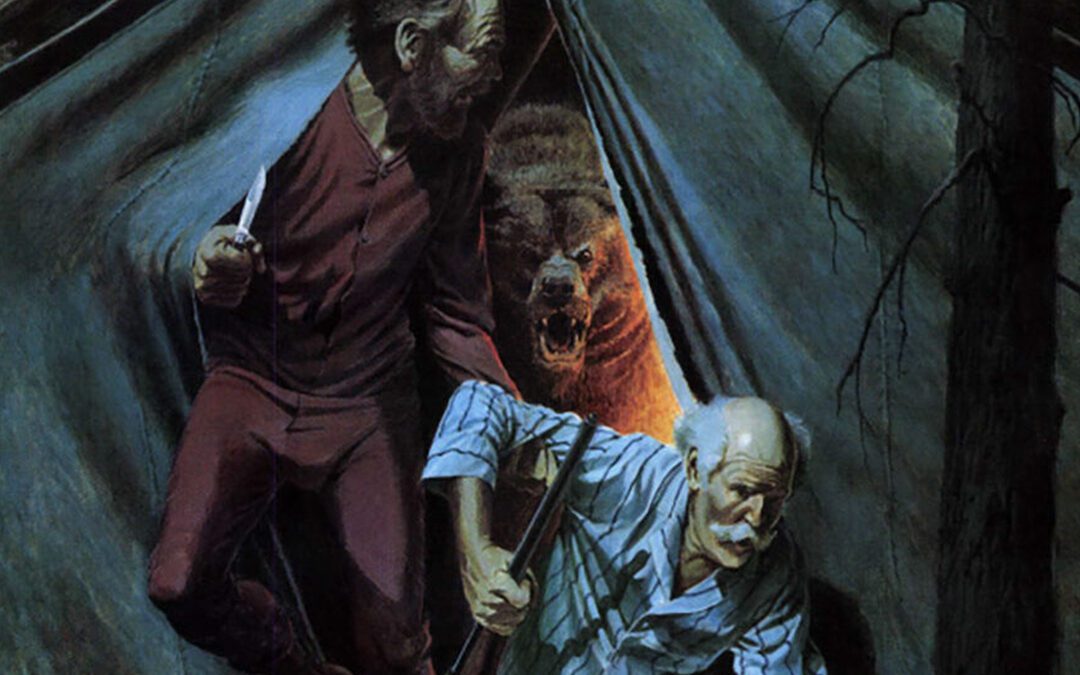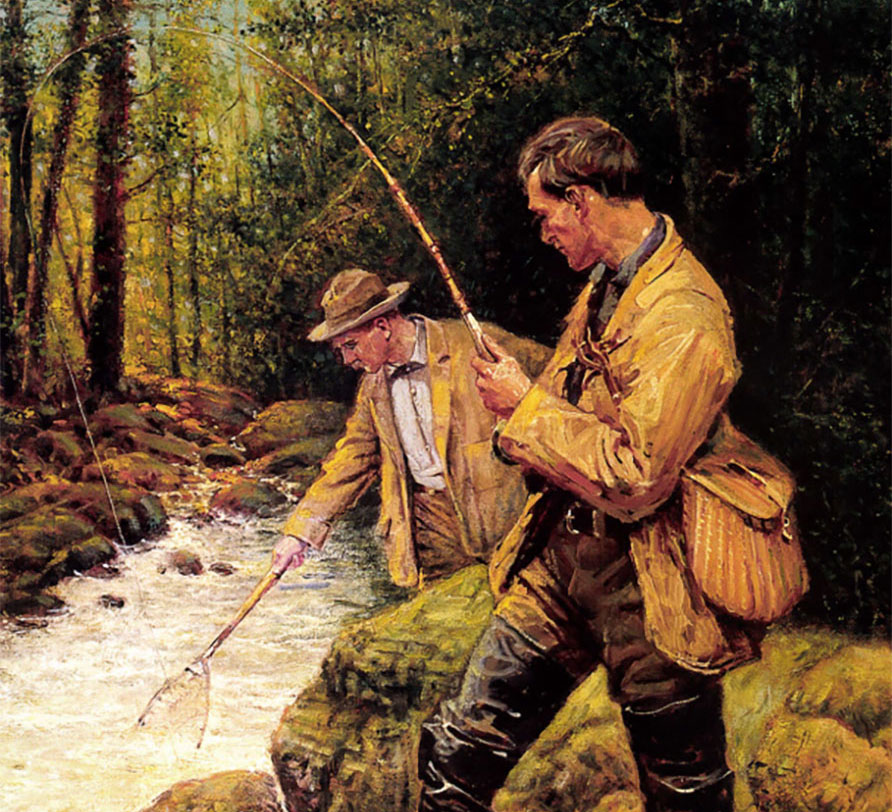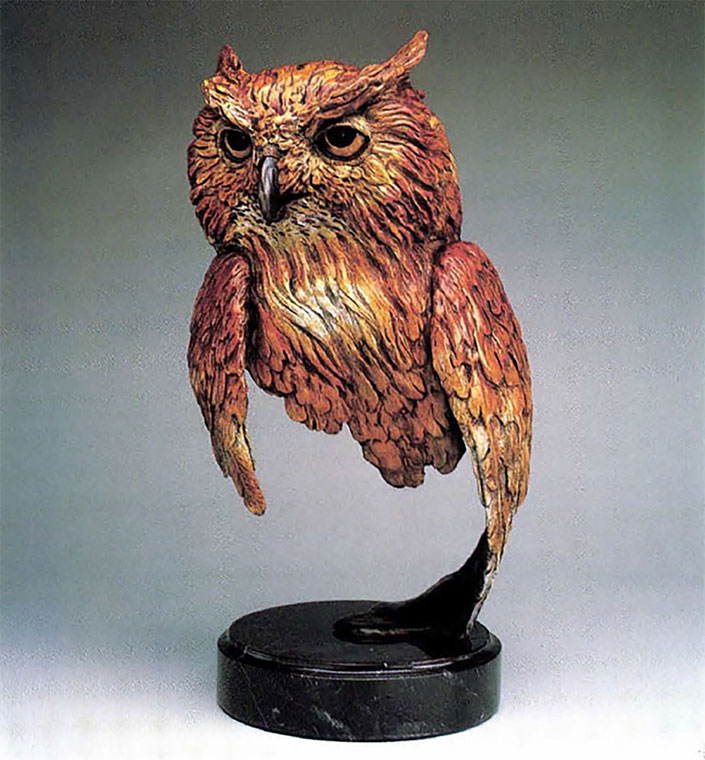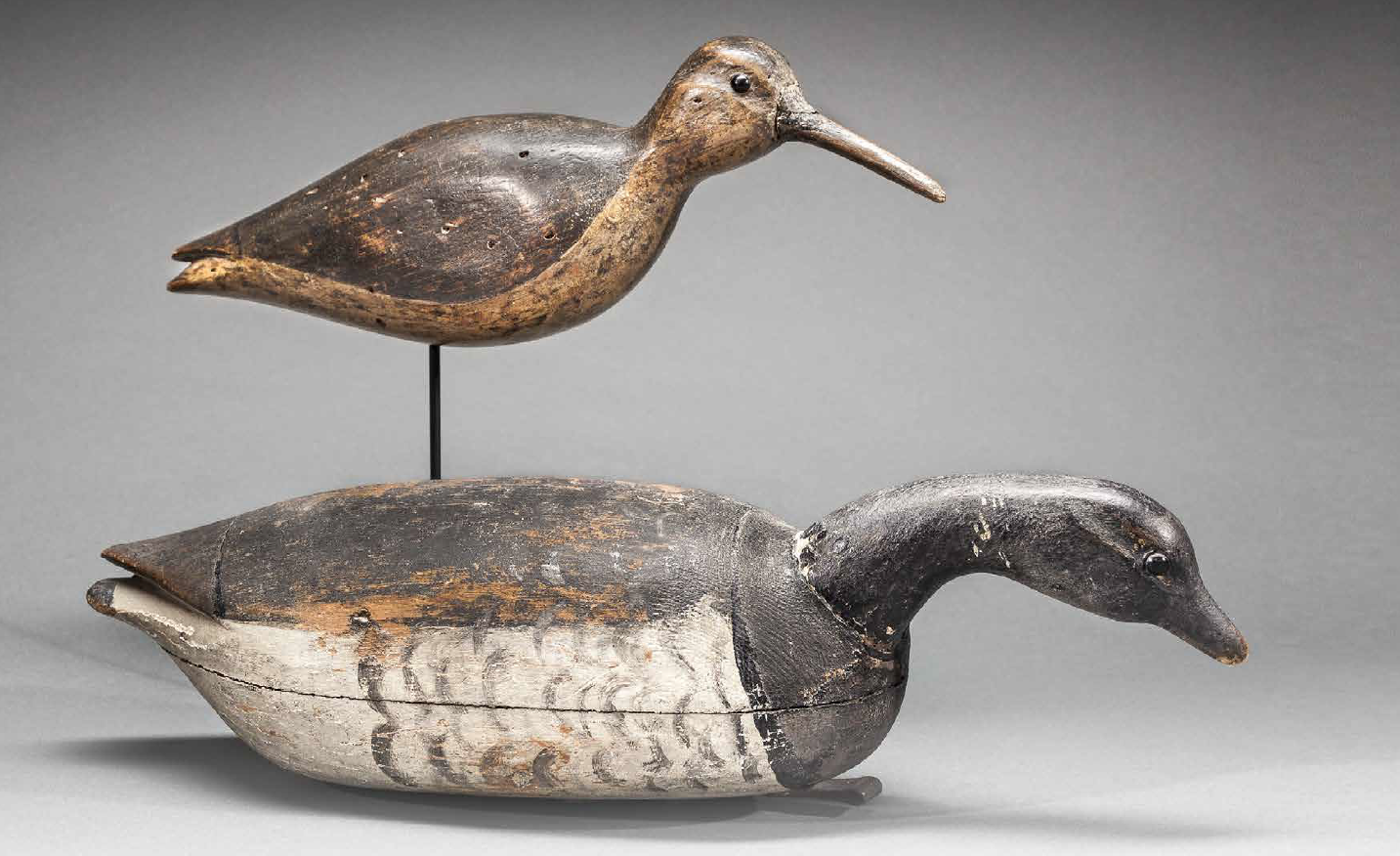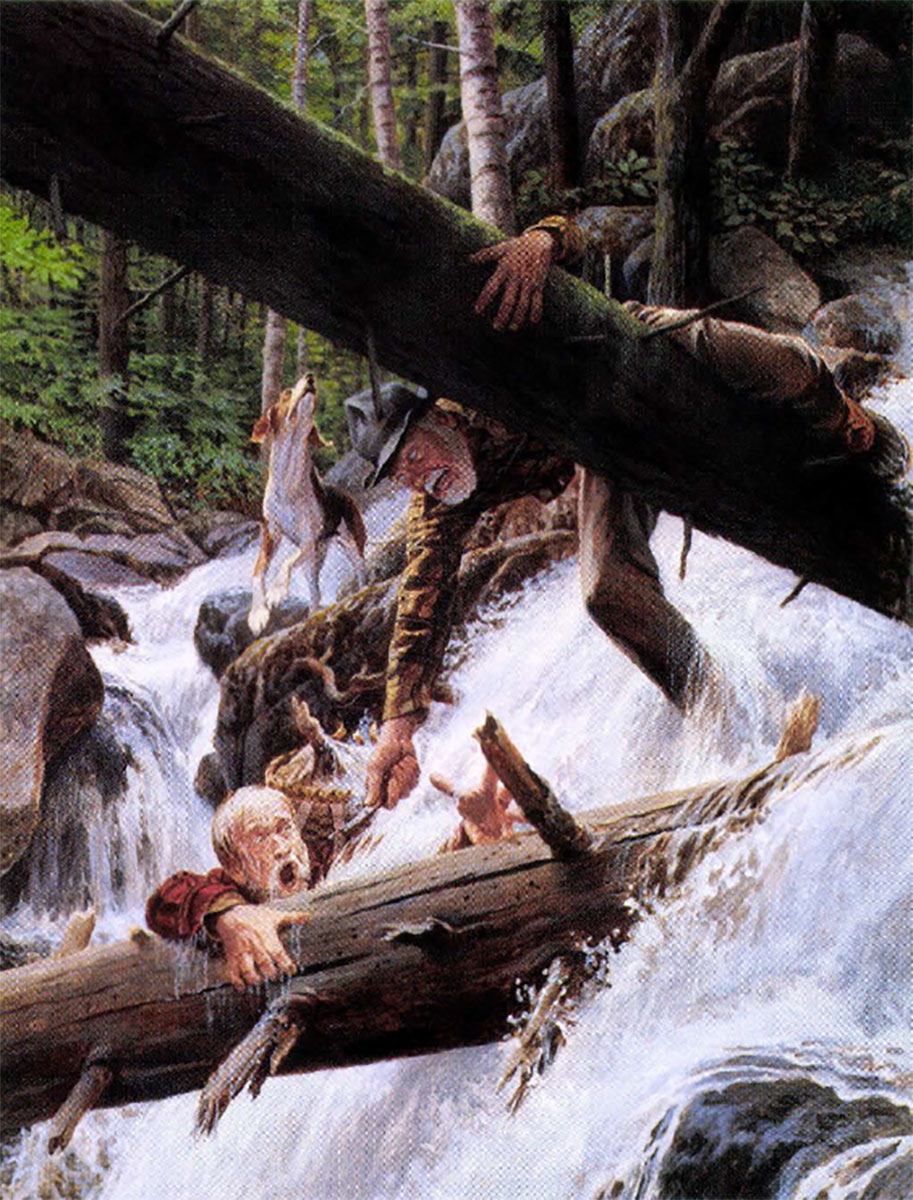
The Master Guide Bullet Knife – Rapid Action, 1995
From the turn of the twentieth century through the 1940s, action-oriented scenes of hunters and fishermen appeared on countless magazine and book covers and on a variety of advertising products including calendars, posters, stationery and even bullet boards and shell boxes. Today, the works of such renowned illustrators as Philip Goodwin, William R. Leigh, Lynn Bogue Hunt, William Harden Foster, Oliver Kemp and Hy Watson, to name a few, altogether comprise a fabulous treasure in sporting art.
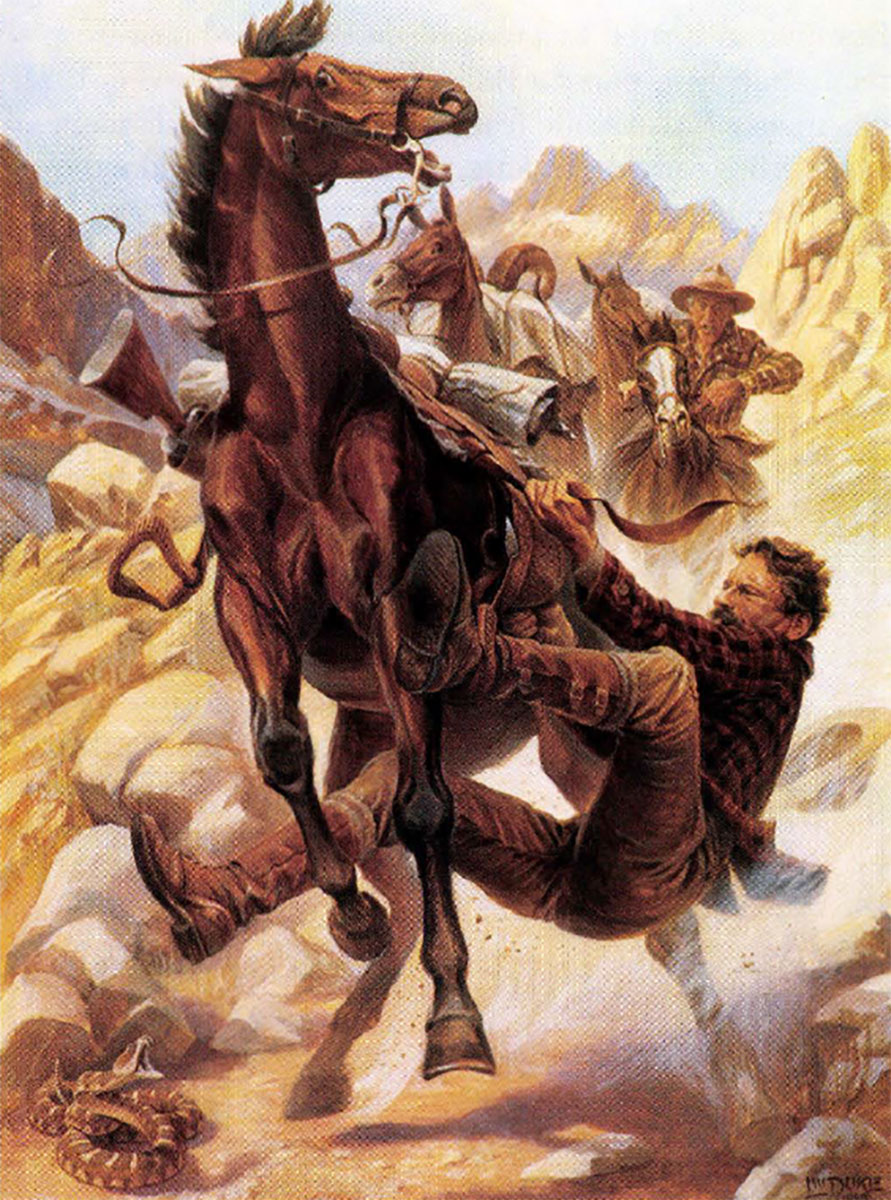
The Tracker Bullet Knife, Rattled, 1990
America’s greatest firearms, ammunition and fishing tackle manufacturers deserve to be recognized for their role in helping to create these fascinating and poignant portraits of early America. Remington, Winchester, Colt, Western, UMC, Peters, Heddon, Bristol and a number of other companies commissioned thousands of paintings, including many that have since become valuable works-of-art.
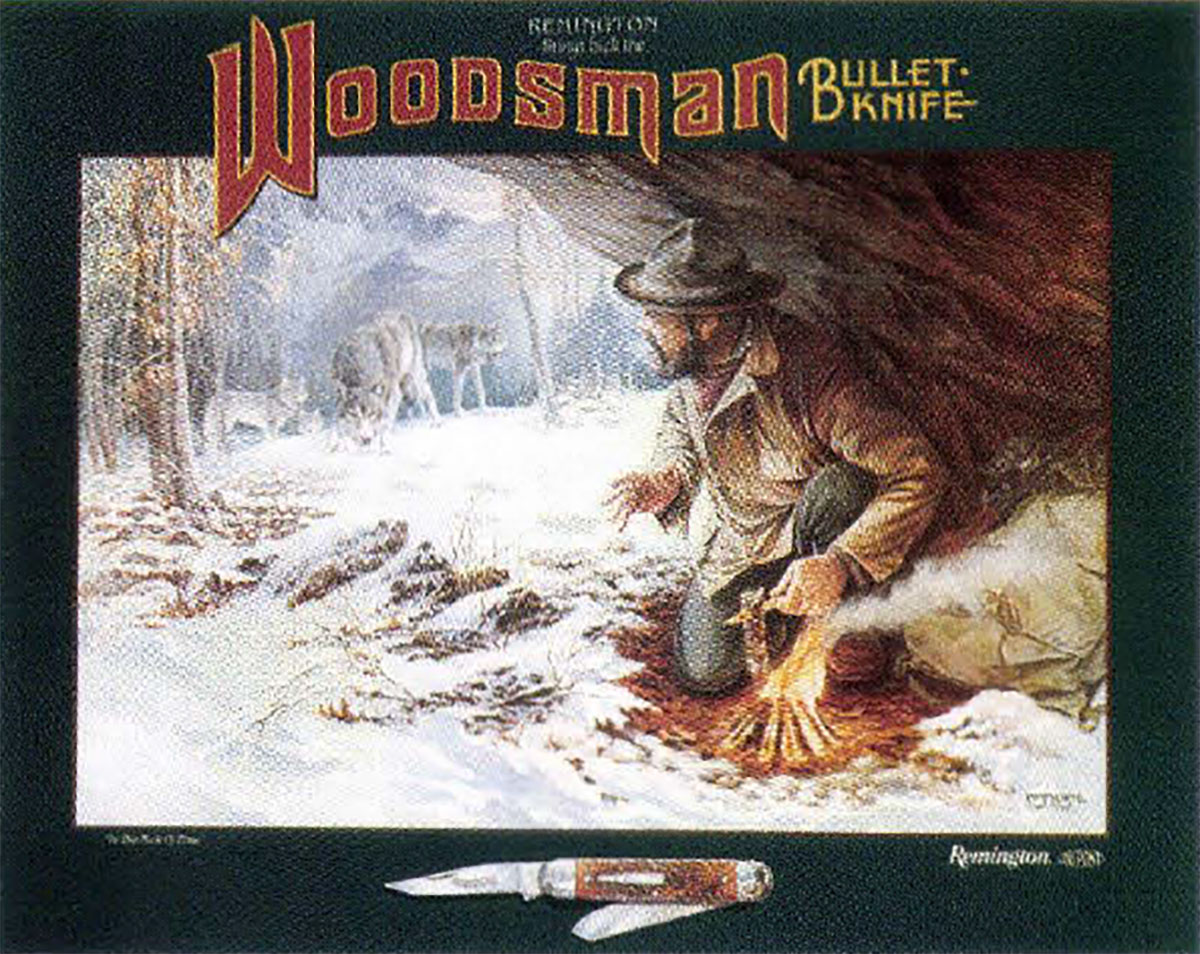
In the Nick of Time, 1985
It was the American sportsman’s long love affair with hunting and fishing art that, in 1982, prompted Remington Arms Company to produce what would ultimately become one of the most revered and collectible series of posters in the history of the genre.
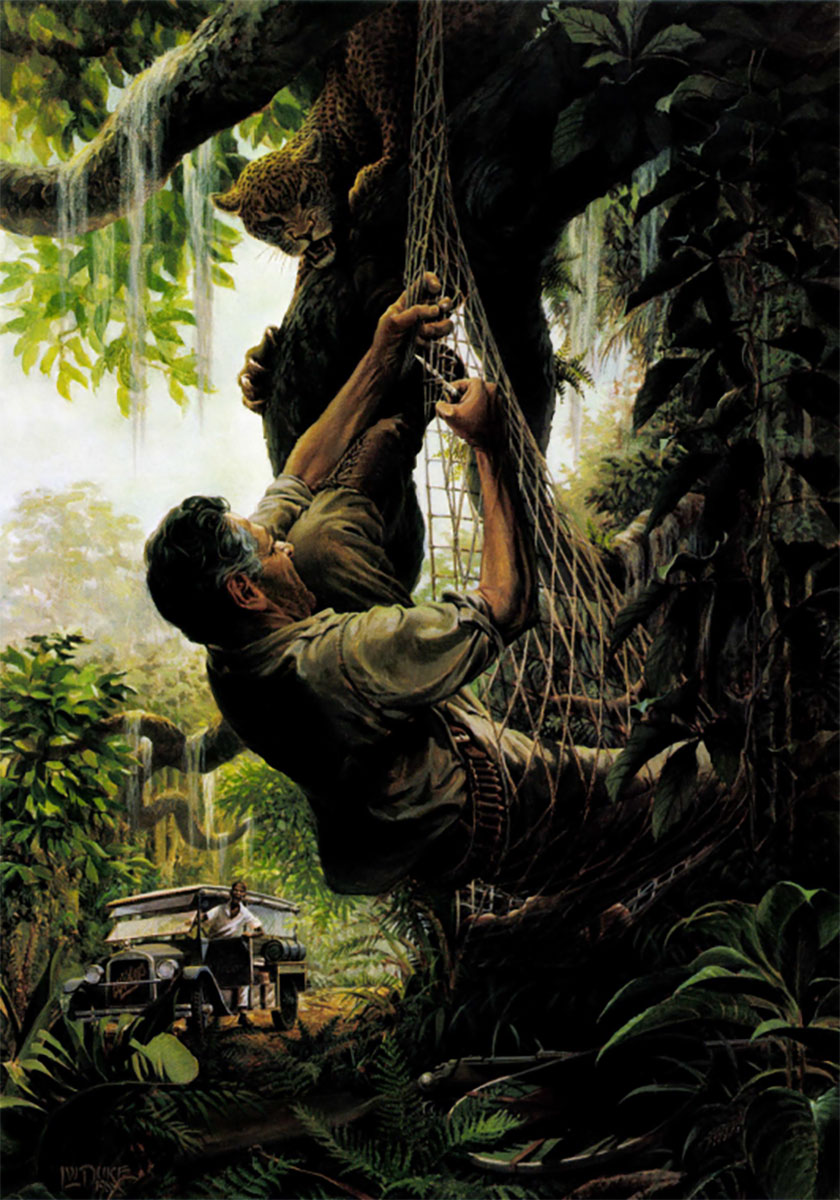
The Trapper Bullet Knife – Out on a Limb, 1989
In a unique promotion for its new Model 4 autoloading and Model 6 pump-action rifles, Remington turned to a chapter in its storied past by reintroducing its popular Bullet Knife. First offered in 1921, the original Bullet Knife featured a nickle-silver silhouette of a centerfire cartridge inletted into a handle fashioned from what Remington called “jigged bone or Zanzibar stag.”
Remington began marketing sportsmen’s knives in 1920and continued to maintain a broad line of cutlery until1939, when it sold that segment of the business to Pal Cutlery Co. in Bridgeport, Connecticut. Pal was a major knife manufacturer until it was closed in 1950.
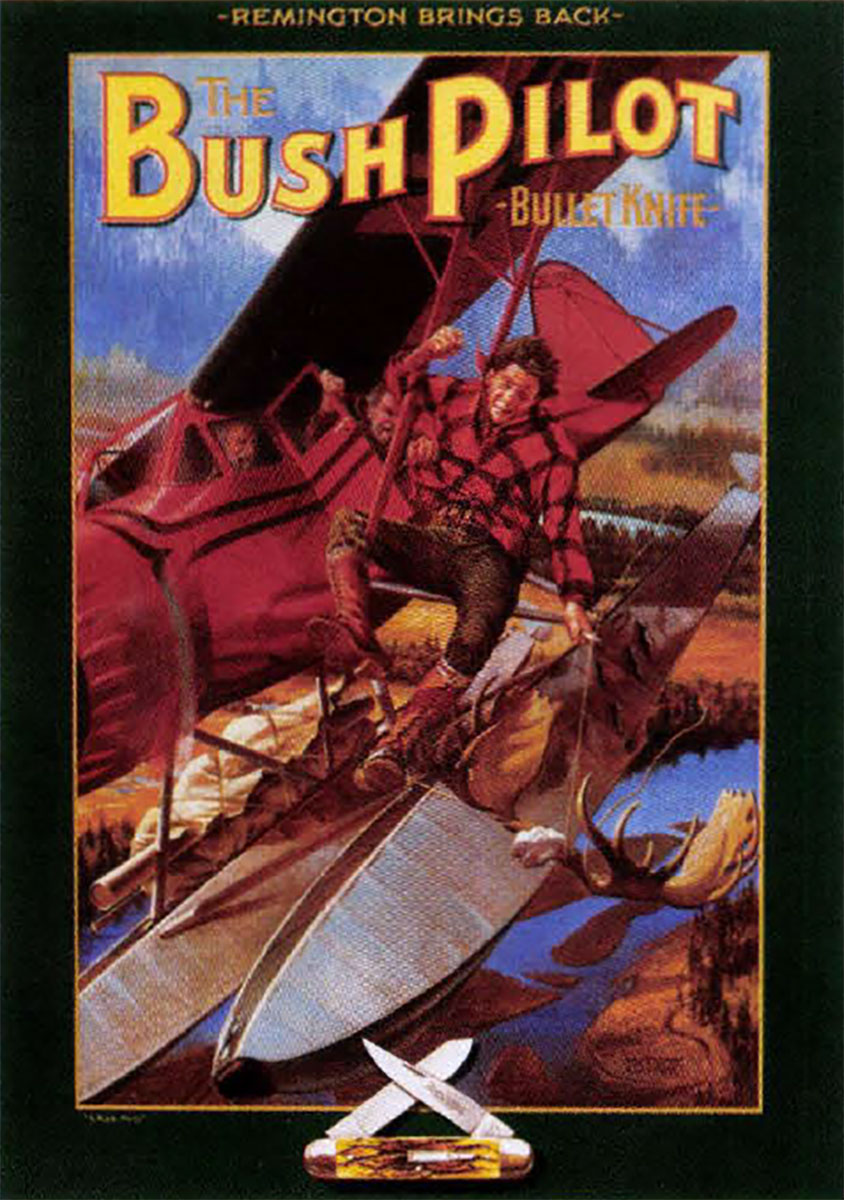
A Rack Awry, 1993
The crux of the 1982 promotion was to offer a Bullet Knife (at $29.95) as an incentive for purchasing a Model4 or 6 rifle. For its advertising campaign, the Remington staff and its advertising agency agreed that a special promotional image was needed — a traditional sporting scene in which the knife was the hero.
For that image, Remington turned to Larry Duke, a nationally acclaimed illustrator who had painted a number of poster images depicting sportsmen, lumbermen, guides and the like for Levis Strauss& Co. With his deep interest in painting old codgers and reprobates from America’s past, Larry was a natural to paint the characters for the Bullet Knife promotion.
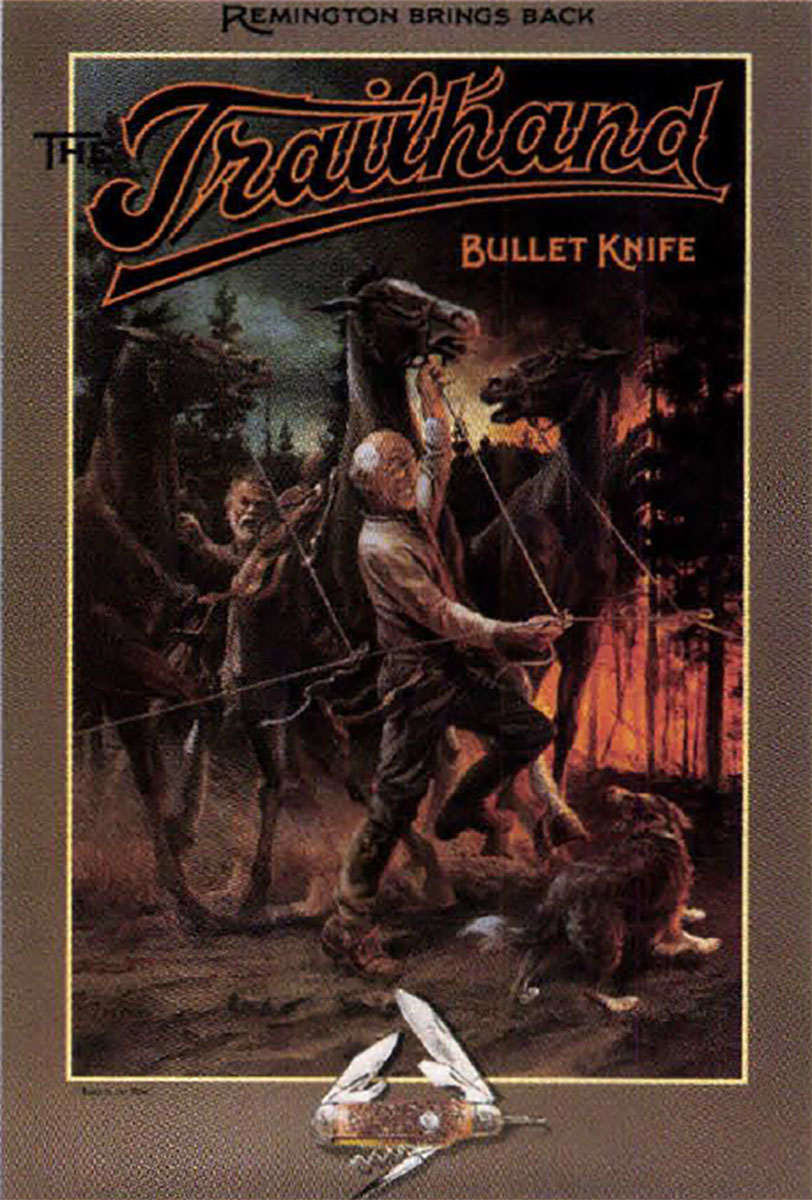
Knot in the Plan, 1996
Larry’s first image for Remington, Bad Time for A Snag, depicts four moose hunters caught up in a life-and-death struggle to cut their canoes loose from a rope that has become entangled in the branches of a tree wedged into some rocks. Just beyond their canoes is a roaring cataract. When Remington published the dramatic scene on its first Bullet Knife poster, it was immediately recognized by collectors and sportsmen as a throwback to the early 1900s style of advertising illustration and all 5,000 posters were snapped up at bargain prices.
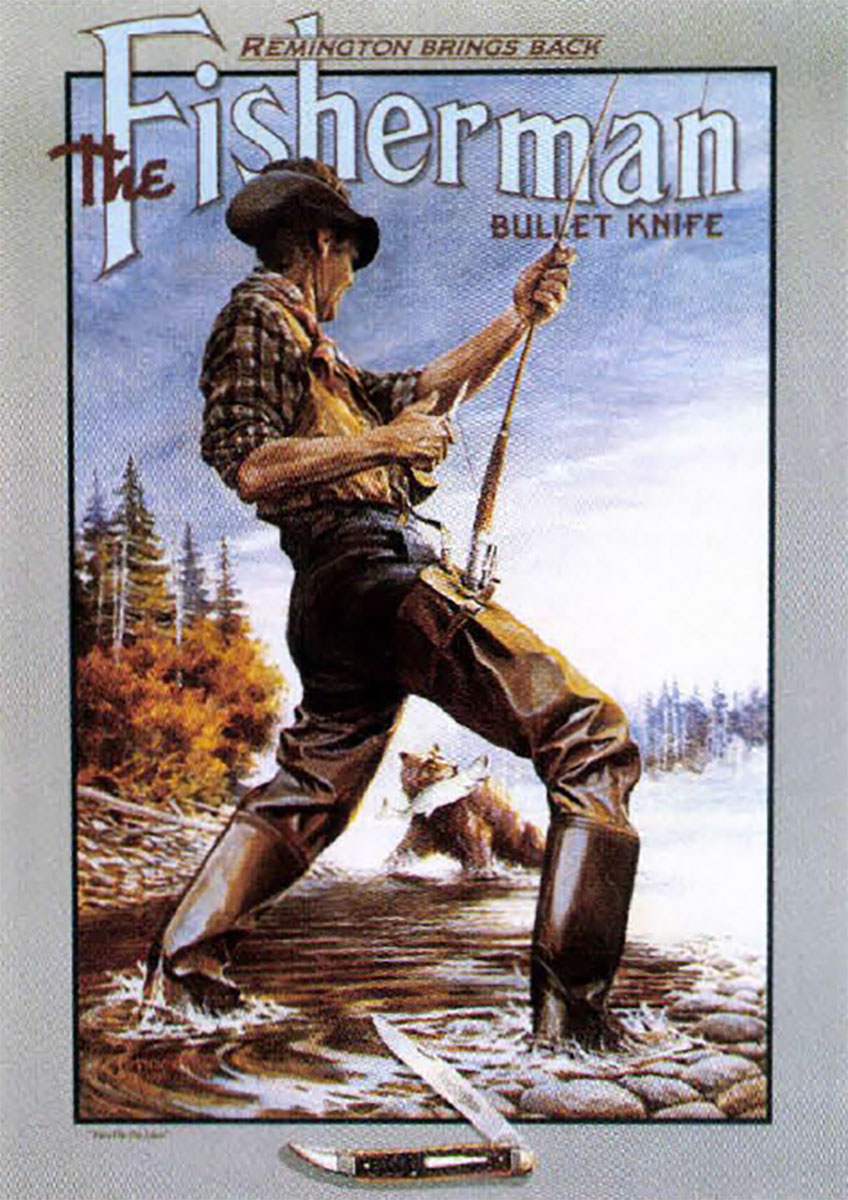
Two on the Line, 1987
Despite the image’s popularity, Remington had no plans to produce a series of knife posters. And so, for their ’83 advertising they simply republished the same Larry Duke image on a large, folded pamphlet promoting a replica of the Baby Bullet Knife, originally offered in 1924. This “trade sheet,” by the way, borrowed the tagline “Fits In Your Palm Like The Hand Of A Friend” from 1930s advertising copy for the Model 51 Auto-loading Pistol. It was mailed along with other point-of-sale materials to about 850 Remington dealers nationwide.
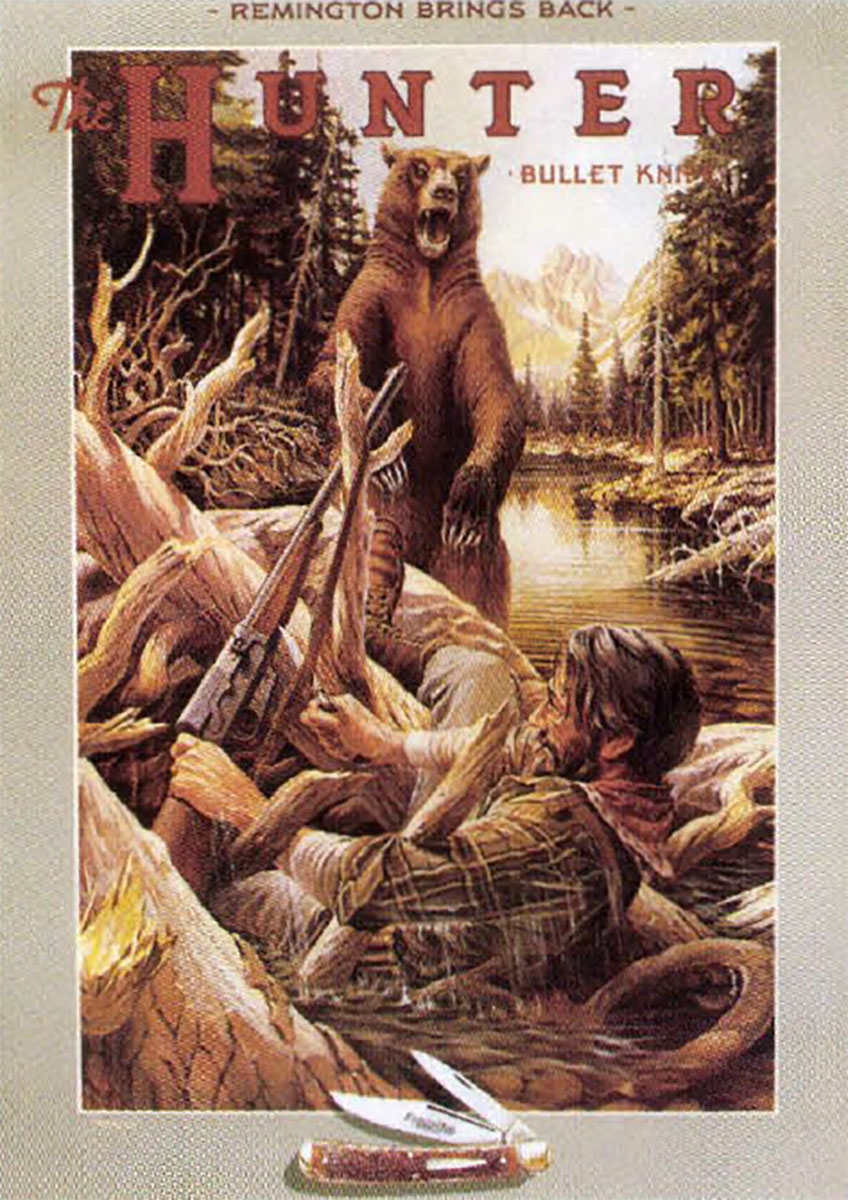
Strapped, 1986
Early in 1983 Remington and Larry Duke came up with another successful image — Trouble on the Trail — to promote the company’s ’84 poster featuring their Lockback knives. But even then, no one at Remington ever thought the knife poster would turn into a series that would eventually total sixteen different images.
Finally, late in 1983, Remington’s advertising and promotional gurus realized there might be a market for posters depicting “old time” scenes of hunting and fishing. Demand for the bull et knives was surging and along with it, there seemed to be a growing cadre of collectors focusing on traditional sporting art.
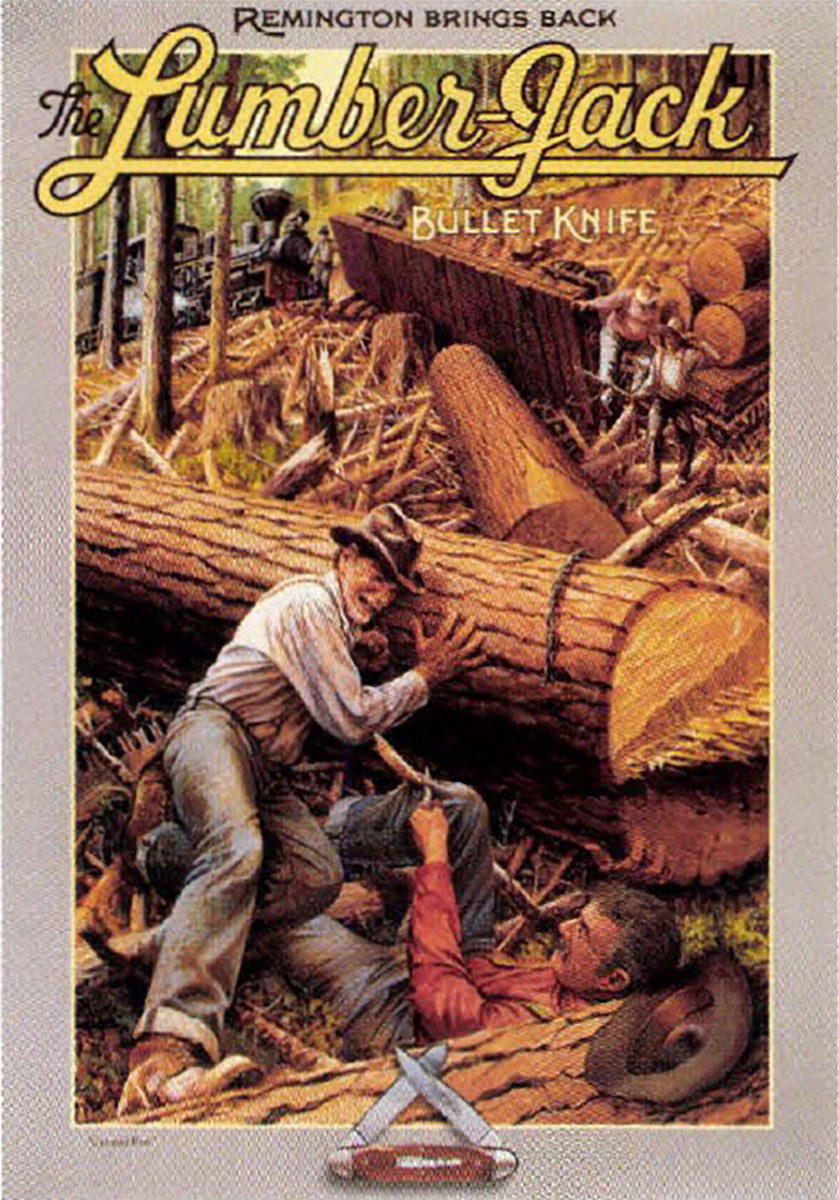
Cut and Run, 1997
Interestingly, 10 years after the posters were well-established as a collectible series, Remington asked Larry Duke to paint an image that would fill the void created in ’82 when the company produced the folded pamphlet. His painting, A Break in the Action, shows the same four hunters from Bad Time for A Snag, now at streamside where one old gent is fashioning a splint to the broken arm of his companion while the others patch up a canoe.
This type of involved, creative thinking has gone into the design of each Remington poster. Once the name of the bullet knife was selected and the theme of corresponding poster worked out, the artist would do a pencil drawing of the concept. Only after a number of sketch revisions would the artist pickup his paintbrush to create a detailed, true-to-life scene with endearing characters.
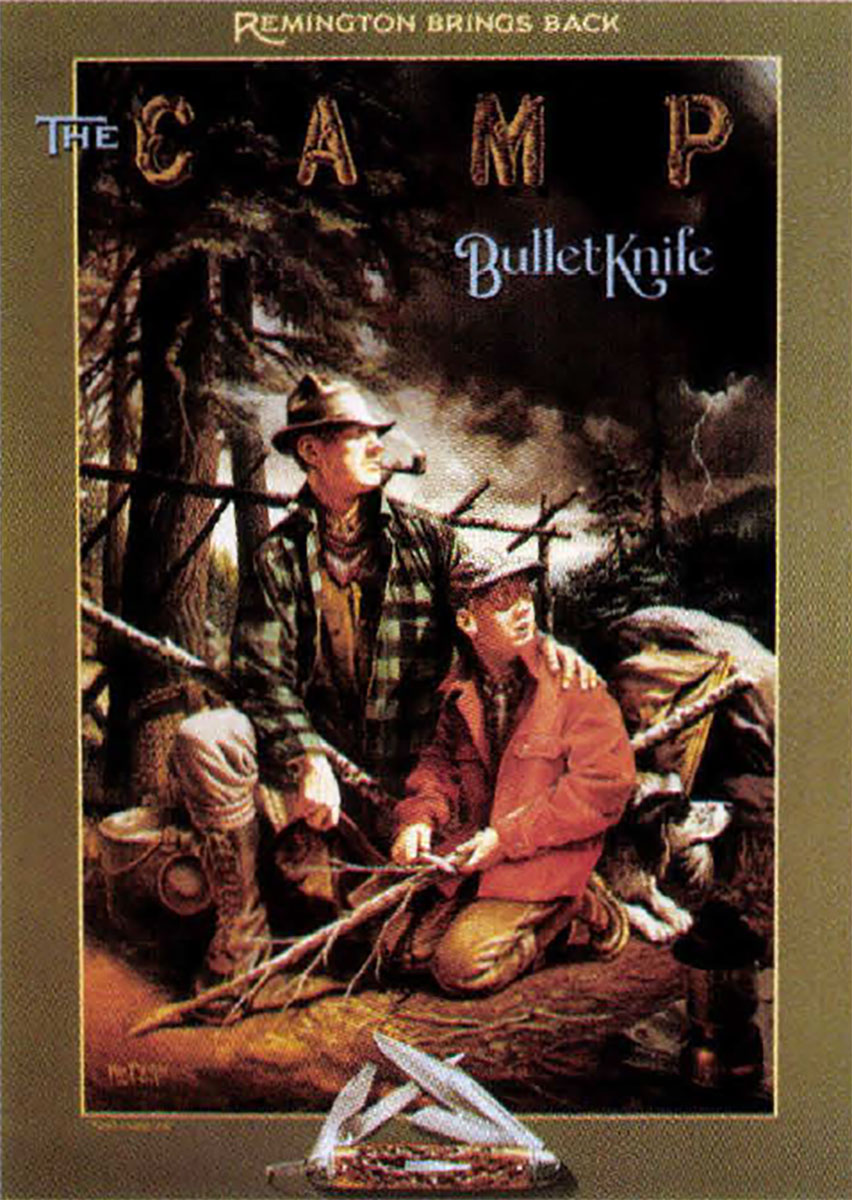
Time’s A-Wastin’, Son, 1994
The staff at Remington wanted each piece to convey excitement, danger and peril in a scene filled with action and intensity. The artist was given strict guidelines: to avoid painting any blood or gore; if a trophy was shown, it could only be the horns or antlers , detached from the animal’s head. The knife was not to be used in self-defense or as a weapon, only to help the outdoors men avoid a deadly encounter with a wild animal or to escape some potentially disastrous incident. Like the great illustrator Norman Rockwell, Larry Duke included himself in several of his paintings for the series. He’s the floatplane pilot in A Rack Awry, our cover image, and the pajama-clad hunter stumbling out of the tent in Helping the ‘Ol Sport Out.
“I put myself in ’cause I was close at hand,” jokes the 60-year-old artist, who now lives in a secluded woodland retreat near Yosemite National Park in California. “All of the paintings and even the titles were great fun. Another character who shows up a lot is a good friend of mine who has that great outdoorsy look. Some of the others were neighbors.
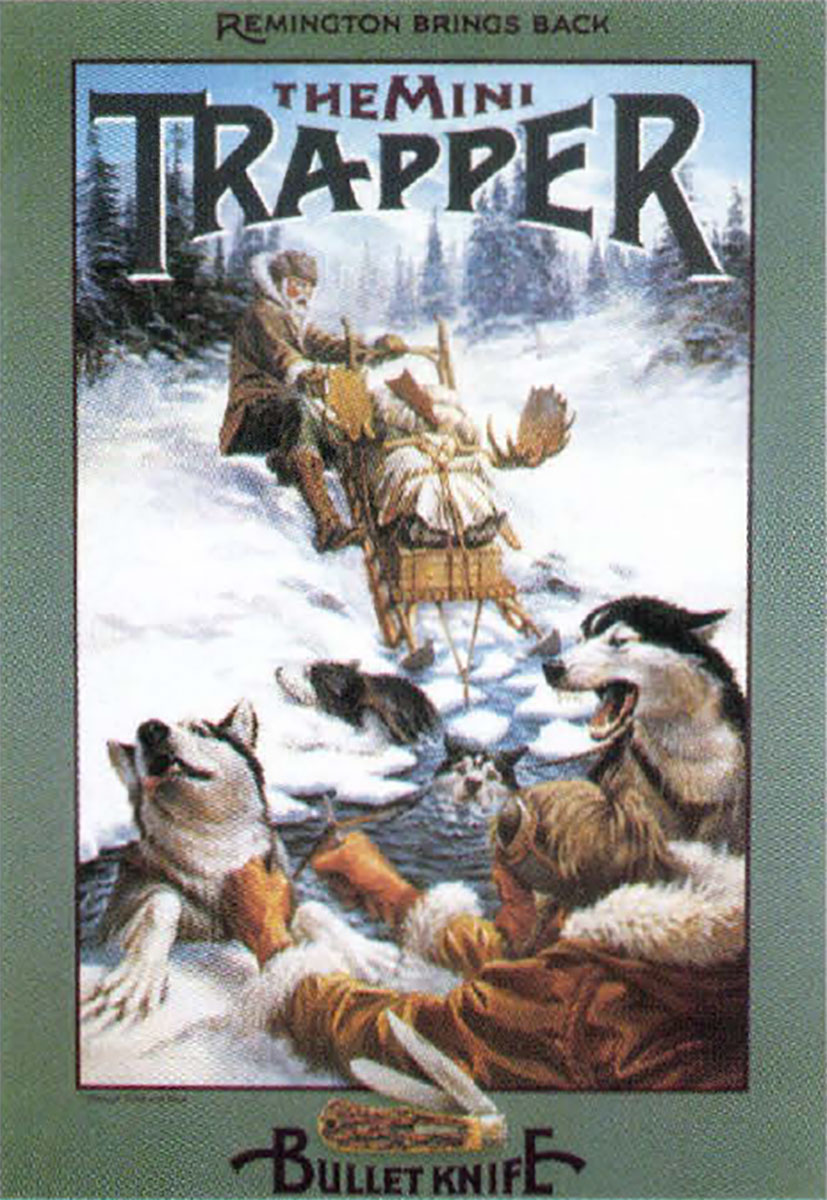
Through Thick and Thin, 1991
“About half of the ideas were mine,” Duke remembers, “and it was always fun trying to think of the most absurd situations I could. The grizzly chasing the two old-timers out of their tent was my idea. After that came out in ’92,I was amazed at how many people told me they had a similar experience…of being run out of camp by a bear.”
Some of the other scenes depict Remington officials and their friends and associates: Bob Haskin, then vice president of marketing and In-House Council, is the man sprawled on the ground in Cut and Run and Tommy Millner, president and CEO, is the man cutting the rope in Knot in the Plan.
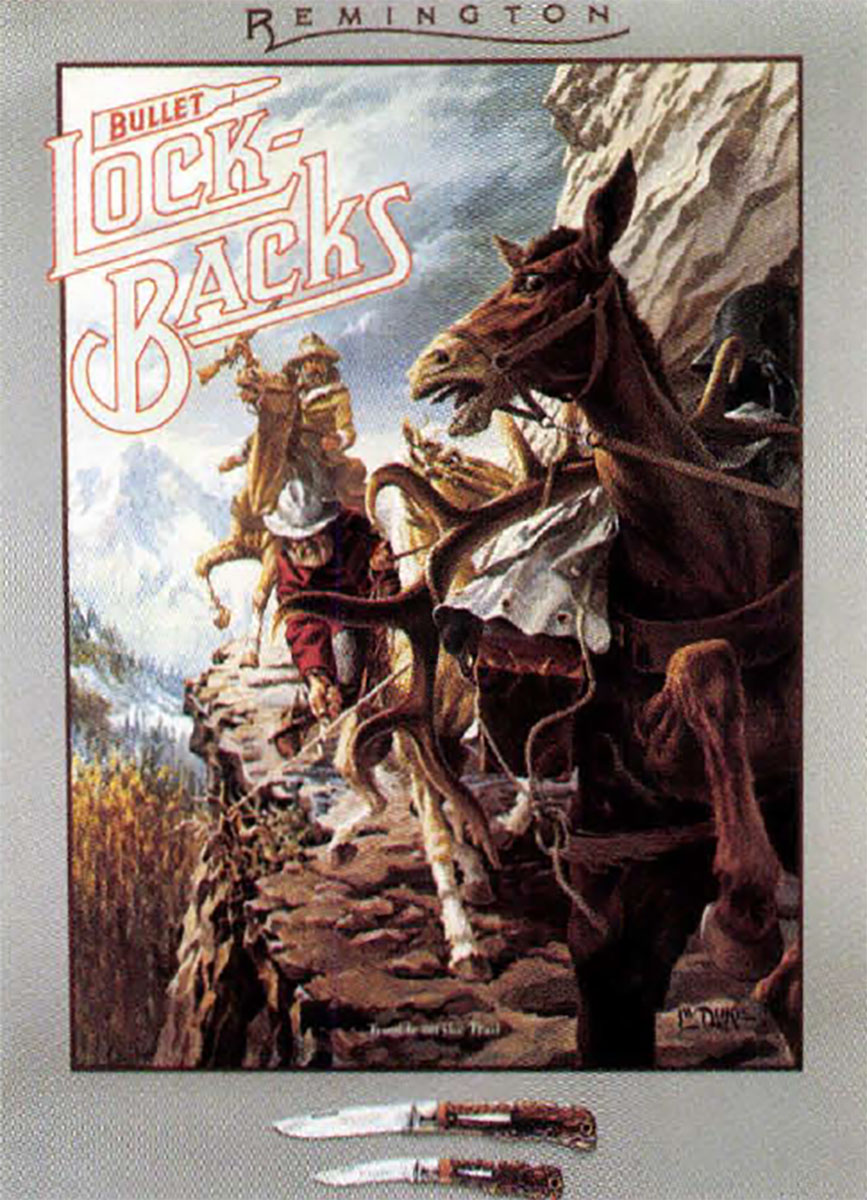
Trouble on the Trail, 1984
My father, Woodie Wheaton, and I appear in Times’ A-wastin’ Son, published in 1994. A widely known and respected Registered Maine Guide for 68 years, Woodie owned and operated Wheaton’s Lodge which hosted Ben East, Wynn Davis, A.J. McClane and many other writers for such famous magazines as Field & Stream, Outdoor Life and True. The painting is a wonderful tribute to the legendary outdoorsman, and it dramatically conveys the need for parentst o pass on our hunting and fishing heritage to their children.
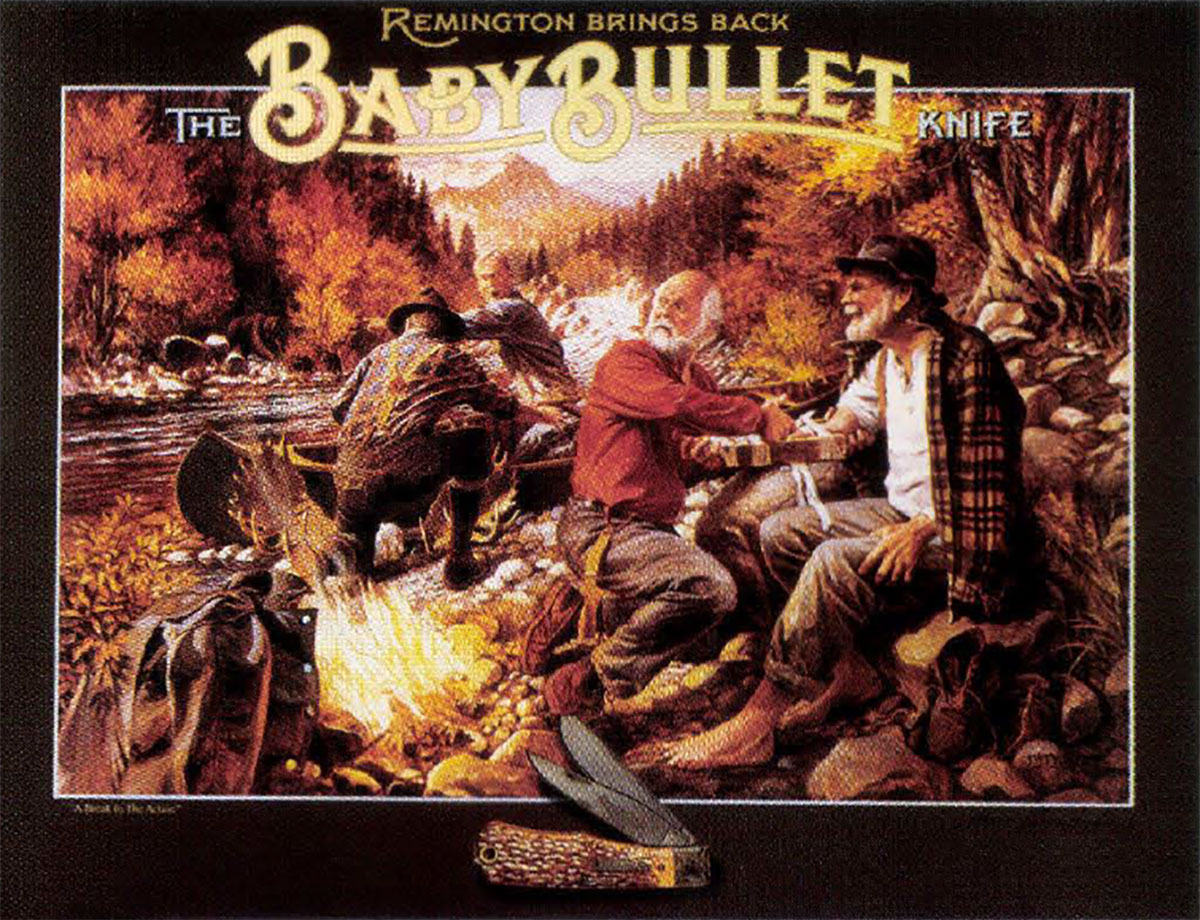
A Break in the Action, 1983
Larry Duke painted 15 of the 16 knife posters, all acrylic-on-canvas. He was scheduled to do the ’88 poster, but when Remington’s rough draft and other materials arrived in his mailbox, Duke had just set out on a cross-country trip. (He later found the envelope in his carport, sufficiently weathered from a year in the elements.) When Duke failed to respond, the folks at Remington were left with no choice but to find another artist. They decided on Bruce Wolfe, a talented California illustrator and a friend of Duke. His A Pack of Trouble, which depicts a snarling wolverine that has laid claimed to a trapper’s catch, is the only oil painting in the series.
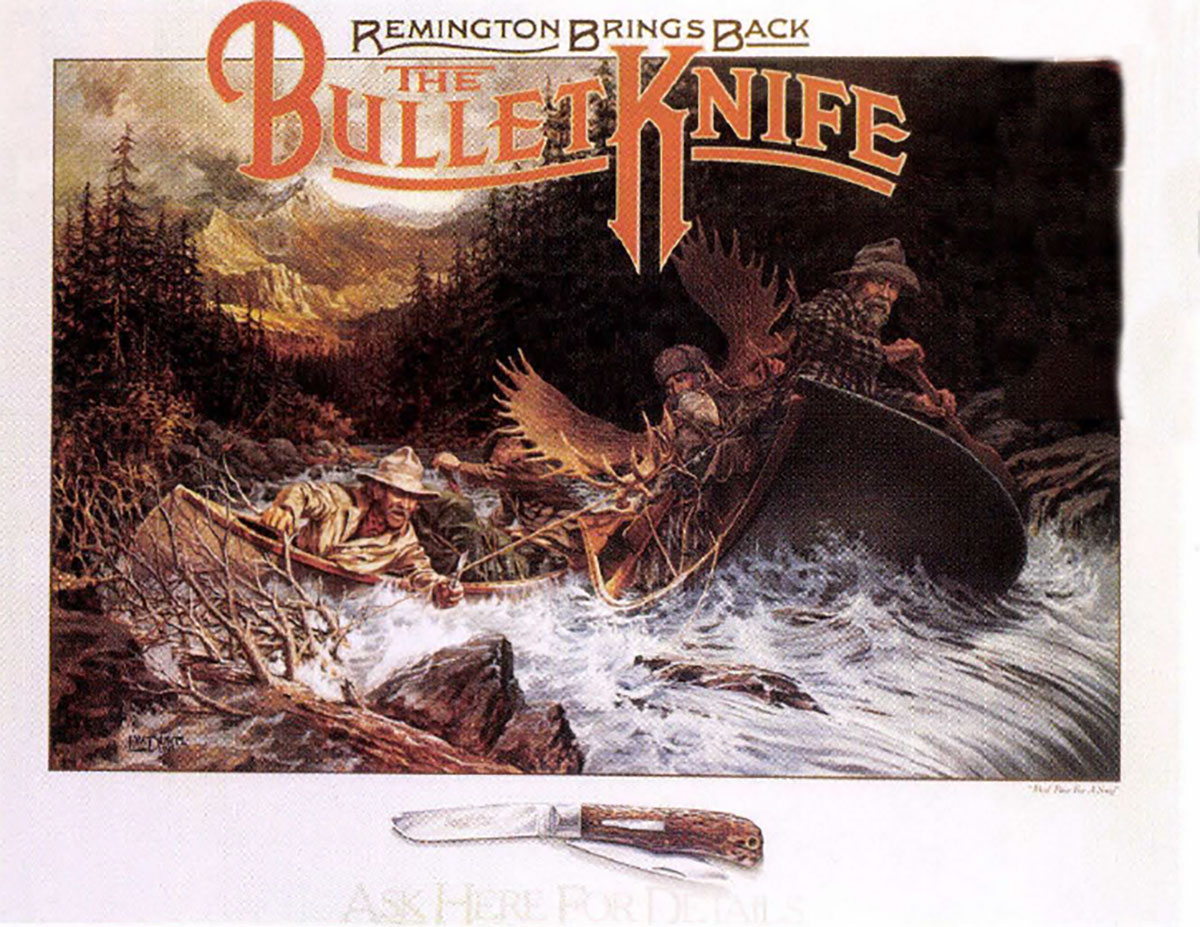
Bad Time for a Snag, 1982
Remington discontinued its poster program in 1997, though it continues to market a new Bullet Knife each year. Nicely designed and printed, the posters represent a great opportunity for collectors to whet their interest in sporting art. Most are still affordable, ranging in price from $45 to $325. Ironically, one of the most valuable (about $1 ,100 retail) is the ’83 trade presentation, which includes the folded pamphlet, a small counter display and other merchandising materials, all inside a large envelope.
 Featured on these pages are more than 280 paintings dating from the early 1970s to today. You’ll join the artist on adventure-filled journeys across North America, Central America, Africa and Asia and discover a vast portfolio of wildlife, including lions, tigers, bears, white-tailed deer and more. You’ll enjoy his gripping and refreshingly honest accounts of the experiences that inspired his artwork. In his stories, Sieve shares his deep commitment to land and wildlife conservation practices and recounts his adventures observing, photographing and hunting his wild subjects. Buy Now
Featured on these pages are more than 280 paintings dating from the early 1970s to today. You’ll join the artist on adventure-filled journeys across North America, Central America, Africa and Asia and discover a vast portfolio of wildlife, including lions, tigers, bears, white-tailed deer and more. You’ll enjoy his gripping and refreshingly honest accounts of the experiences that inspired his artwork. In his stories, Sieve shares his deep commitment to land and wildlife conservation practices and recounts his adventures observing, photographing and hunting his wild subjects. Buy Now
